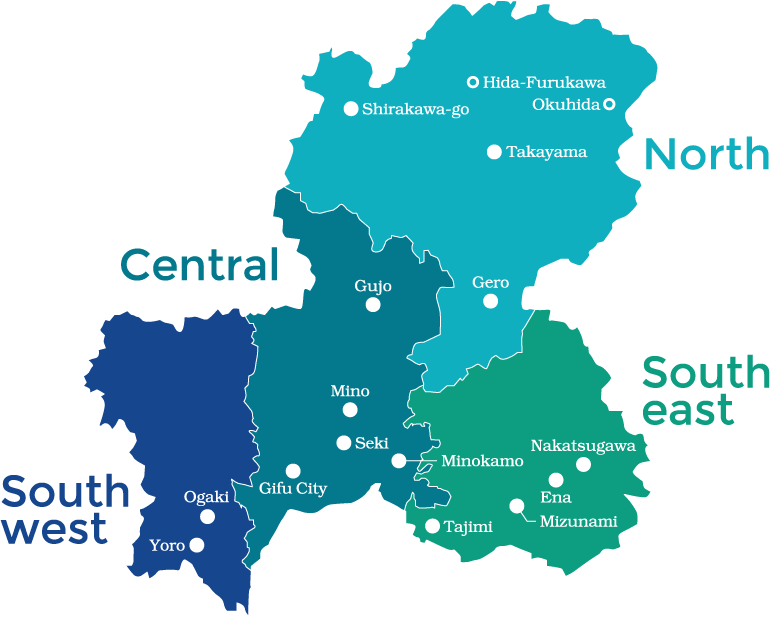
Okuhida
Located in Japan’s Northern Alps, Gifu’s Okuhida area is a gateway to the mountains. In summer, the cool air and breathtaking scenery makes the Northern Alps a hiker’s paradise, while in winter the area offers activities such as skiing and snowshoeing. Year-round, you can take in stunning panoramic views of the mountains from Okuhida’s Shinhotaka Ropeway.
Nestled among this collection of 2,000- and 3,000-meter peaks, Okuhida’s rustic villages are home to traditional ryokan inns, where travelers can stay in tatami mat rooms, enjoy regional cuisine like the local Hida wagyu beef, and soak in soothing hot-spring baths. With the hot-spring villages here having the most outdoor hot-spring baths in all of Japan, bath time frequently comes with stunning mountain views. As well as being just an hour by bus from central Takayama, Okuhida can also be accessed by bus from neighboring Nagano and Toyama prefectures—it’s a one-hour ride from Matsumoto city and two hours from Toyama city. A rental car is another great way to get around this part of Gifu.

















